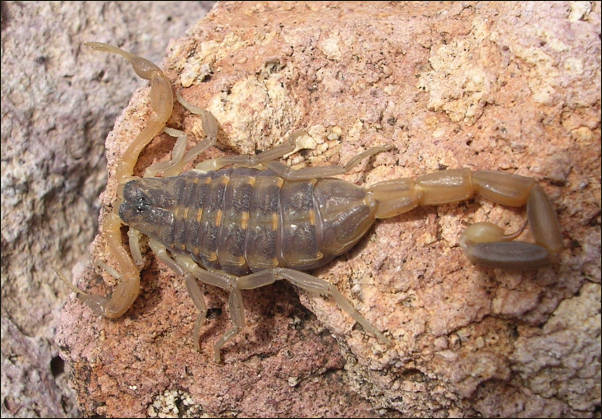



Centruroides suffusus female from east-southeastern Durango. Photograph courtesy of Kari McWest.
Yellow to tan with two broad, dark longitudinal stripes on the upper side of the abdomen. Slender pincers and a long, slender tail are characteristic. The pigment on the carapace is similar to that of Centruroides vittatus, but is suffuse (hence the name) toward the lateral margins.
Centruroides suffusus is often found under rocks, boards, and in detritus.
The Mexican states of Durango.
Centruroides suffusus, like the other members of the Buthidae, eats other arthropods. Included in its diet are spiders, solfugids, other scorpions, and an array of insect prey.
The sting can cause severe local and systemic symptoms. The sting of this species is one of the few that can actually cause death even in healthy, adult humans.
Polis, G. A. 1990. The biology of scorpions. Stanford University Press, Stanford, CA
Scorpions of the Chihuahuan Desert
Aaron Bodor, June 2006.
A.H. Harris: Last Update, 4 Jul 2006.